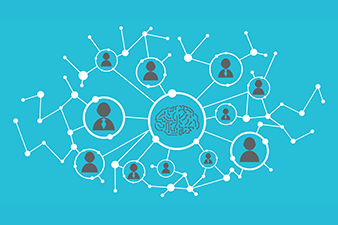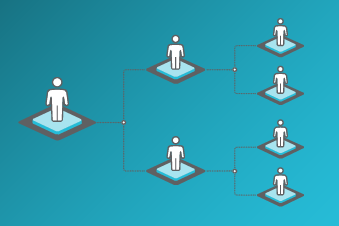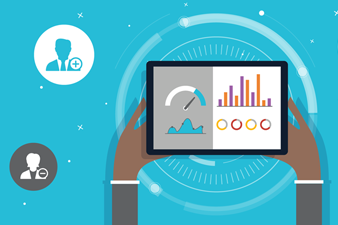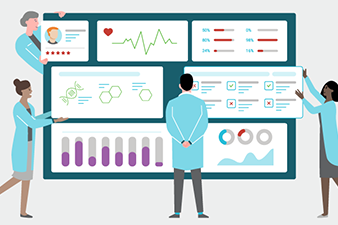
The Future of HR: A Three-Part Article Series
People analytics has been a popular topic within HR over the last several years and for good reason. This emerging discipline, also referred to as talent intelligence or HR analytics, informs and enables better hiring practices, higher retention of talent, more effective performance management, and better employee engagement.
One industry study from LinkedIn[1] reports that companies leveraging people analytics to support business decisions see an 82% higher three-year-average profit than their counterparts. Given such considerable results, it’s no surprise that 71% of companies see people analytics as a high priority.[2]
People analytics literature often focuses on what is possible with advanced tools and organizational capabilities. However, many organizations are still in the early stages of their people analytics journey. With that in mind, let’s start with the fundamentals.
What Is People Analytics?
Simply put, people analytics is the practice of turning disparate employee data into insights that drive business decisions. The same LinkedIn study reports that only 9% of leaders have a strong idea of which talent dimension(s) drive organizational performance, leaving many organizations guessing as they struggle to attract and retain talent. People analytics can help organizations understand talent trends and drivers, including which hiring criteria lead to high performers or why retention in certain job roles is so challenging.
Why HR Is in a Position to Lead
In many ways, HR holds the “keys to the kingdom” when it comes to organizational information. As the owners of the organization’s people data—hiring trends, turnover, performance, etc.—HR is uniquely positioned to inform and drive key business decisions. As mentioned in “The Path to HR Agility,” high-performing HR organizations proactively collect and analyze their people data, develop meaningful insights, and leverage a problem-solving mindset to consult and partner with business leaders.
Getting Started
Of course, implementing people analytics is not as simple as flipping a switch. There can be challenges with underlying HR data, existing skill sets within HR, and leadership and organizational buy-in. However, there are small but meaningful steps you can take to develop your people analytics roadmap and strategic plan:
- Understand your data. Which data are truly relevant to your objectives? Are your data sources reliable? Do they integrate with one another?
- Identify a target. Armed with your understanding of the data—along with knowledge of key business challenges and existing HR skill sets—identify a single, manageable issue to investigate.
- Partner with others. In addition to business leaders, HR needs to partner with other areas of the organization—such as IT and legal—especially when sensitive employee data is being gathered, analyzed, and used to make decisions.
- Start your journey. Investigate your initial target issue and provide meaningful insights and recommendations to leadership. Start building your roadmap and leverage your early successes to build momentum and gain organizational support.
People analytics can have a significant impact on your organization’s bottom line. To efficiently design and implement your best path forward, be sure to partner with someone who knows how to harness the data found within your own organization without having to buy new tools. Starting small and demonstrating success is an effective way to gain valuable buy-in from your organization.
How ScottMadden Can Help
With more than 25 years of experience in HR operations and shared services consulting, ScottMadden has helped build people analytics practices for countless organizations. Contact us to discuss if applying people analytics is a good fit for your business goals.
[1] The Rise of Analytics in HR: An Era of Talent Intelligence,” LinkedIn Talent Solutions. 2019.
[2] Ibid.







































